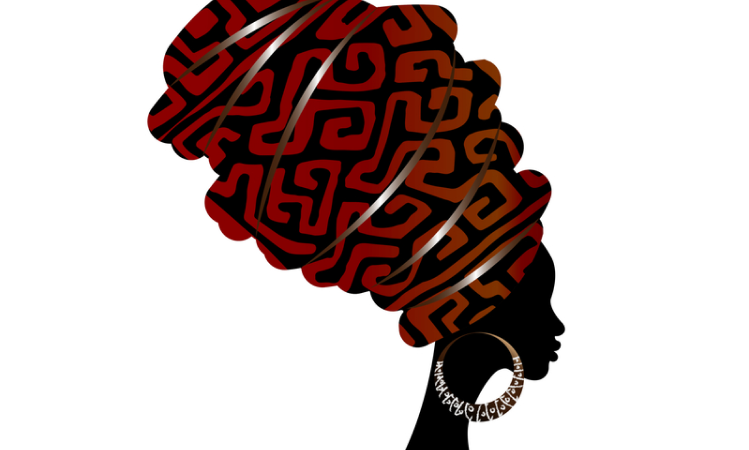Girl, Woman, Other: lending a voice to a new generation of black, British non-conformists
From the opening dedication of her eight novel, Girl, Woman, Other, Anglo-Nigerian best-selling author Bernardine Evaristo, makes her intention of telling marginalised stories by usually overlooked minority groups clear:
For the sisters & the sistas & the sistahs & the sistren & the women & the womxn & the wimmin & the womyn & our brethren & our bredrin & our brothers & our bruvs & our men & our mandem & the LGBTQI+ members of the human family.
The book, which was the joint winner of the prestigious Booker Prize in 2019, alongside Margaret Atwood’s The Testaments, follows twelve characters whose stories span generations, from ninety-three year-old Hattie who lives in the rural northern English countryside, to Amma, a lesbian theatre director whose latest work is debuting at the National Theatre in London.
Amma is arguably the protagonist of the novel. An outspoken, brash and undeniably eccentric character, she is mother to Yazz, a child she has with her queer partner Roland. Yazz, similar to her mother, is passionate, crude and at times risqué, a representation of the new generation of young black women unafraid to be seen, heard, and validated through the brilliant telling of their stories. For Yazz is a feminist, and although sardonic to the core, her ideals are brilliantly intertwined with that of her mother, who herself was a renegade and rebellious youth.

The structure of the novel is deeply unconventional, and can best be described as a hybrid of poetry and prose. The distinct lack of punctuation and capitalization, whilst at first jarring, adds to the poetic nature of the stories. The polyphonic tone, use of run-on lines, and lack of plot adds to the feeling that the characters’ stories, motives and thoughts are the focal point of the novel. Much like the poetic tone of Evaristo’s previous work Lara, we get the sense that poetic form is central to the telling of each character’s story, with each word woven together like a perfectly placed line of poetry.
Within the novel, Evaristo is not afraid to take on taboo subjects, such as domestic abuse and gender identity. Dominique, a best friend to Amma, is also a lesbian, who like Amma, is unapologetic, wild and exuberant. However, when by chance she meets Nzinga, a stunning African- American woman at Victoria station, we quickly see Dominique’s independent spirit diminished under the emotional abuse imposed by Nzinga.
This is most evident when the couple moves to America, to join an all-female commune, with Dominique losing all ties to her life back in Britain. She “soon became a teetotal, vegan, non-smoking, radical feminist lesbian housebuilder on wimmin’s land called Spirit Moon, which only allowed lesbians to reside there.” Nzinga quickly becomes possessive, accusing Dominique of flirting openly with other women, eventually forcing her to stay home and not interact with anyone inside or outside the walls of their home.
When Amma arrives to visit her friend, she’s overcome by the figure she sees before her. Dominique has become passive, under the influence of Nzinga who threatens her with violent emotional slurs. As is the case in many abusive relationships, Nzinga is afraid to leave, but eventually finds the strength she needs to begin a new life in Los Angeles, away from Nzinga.
These topics are not light and the reader develops a deep sense of empathy for each character we meet. Take non-binary Morgan, who as a teenager lives under the oppressive views of their parents and turns to drugs like cocaine, ecstasy, and ketamine to escape their feelings of rejection and isolation, before finding love with Bibi and becoming a successful social influencer. Or Shirley, the repressed school teacher who is deeply conservative, especially when it comes to her beliefs on lesbianism. She’s best friends with Amma from childhood, and although we can see her deep flaws, we soon come to feel empathetic for her as a woman who never fully got to embrace her more libertarian side. She even feels like an outsider around Amma and her more bohemian friends, with Dominique perhaps representing the more free-willed version of herself she wishes she could be.
One critique of the novel may lie in its overabundance of characters. At times, the reader can’t help but feel jerked between stories, as if there’s a mad dash to tell as many stories as possible, within the tight constraints of the novel form. There’s a real sense that Evaristo is experimenting with form here, perhaps pushing the boundary of how we define a novel and by what parameters. This feeds into the style of the novel too, which mentioned before is deeply unconventional. However, Evaristo never loses control of her characters, in the sense that each story is masterfully woven into one another. The result is that there are varied voices and opinions unified under one commonality; these are all black women, or non-binary in the case of Morgan, with a shared experience of living as a person of colour in Britain.
Their experience, although very different, is unified under the struggle of making sense of what it means to be British and black, and how that experience informs your position in, and view of, the world. For Evaristo, her love of literature and clear flair for story-telling, along with hard graft, has elevated her to Professor of Creative Writing at Brunel University, London and now as a world-renowned author.
But what does it mean for the characters in her story? More importantly, what does it mean for the generations of black British women, men, non-binary and LGBTQI+ people in Britain today? That’s who Evaristo dedicates this book to, and perhaps by elevating the stories of minority groups, Evaristo may inspire a new generation of empowered and emboldened youth who can elevate the black British experience to a new level and tell stories that deserve to be heard and understood deeply.

